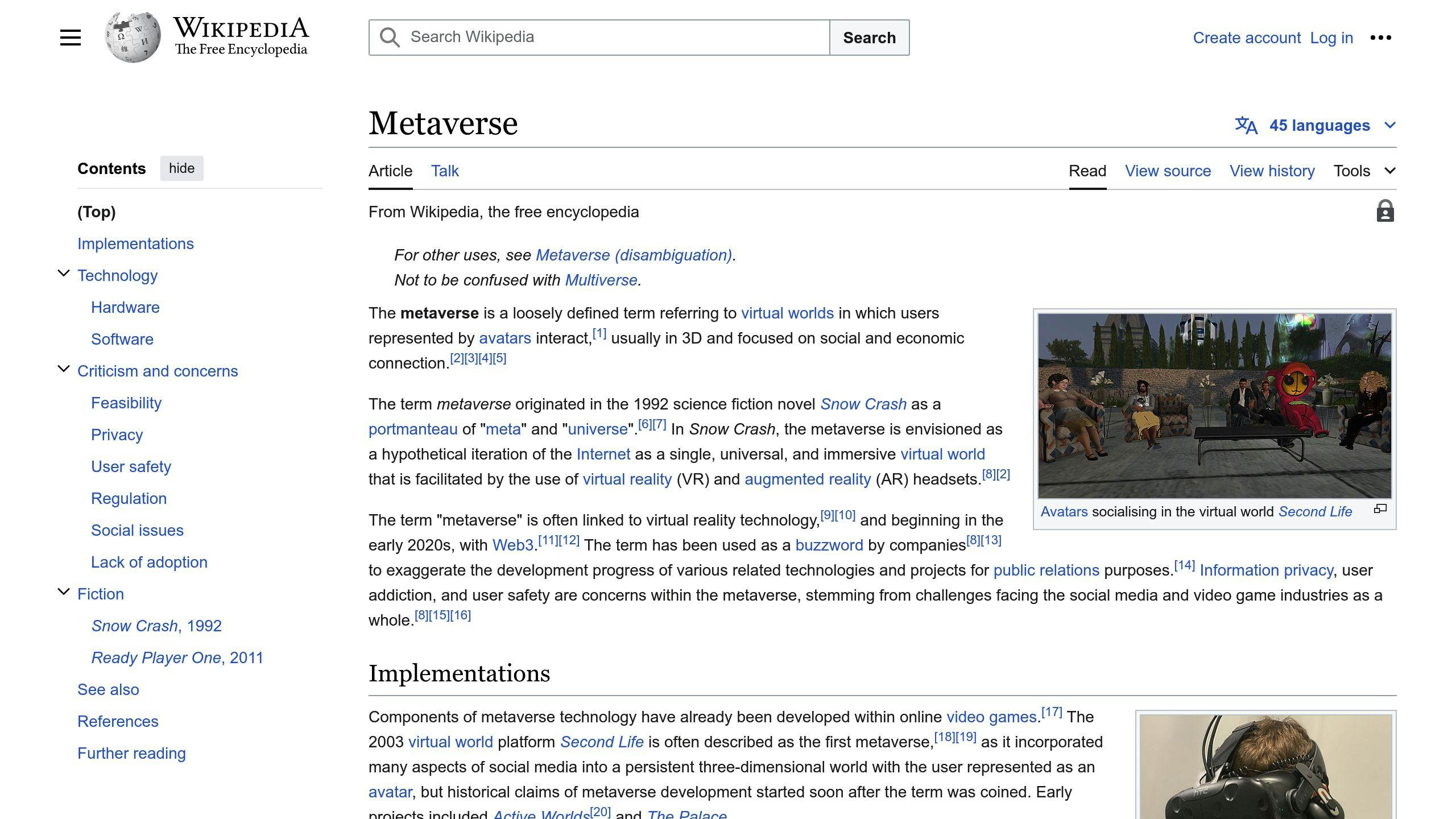Conversational AI allows machines to understand and respond to human language through natural language processing and machine learning. It offers a personalized experience, boosting customer satisfaction and sales. The global conversational AI market is expected to grow from $8.24 billion in 2022 to $32.51 billion by 2028.
- Self-learning AI: Improves by studying user interactions, providing personalized responses.
- Advanced Natural Language Understanding (NLU): Goes beyond basic language processing to understand intent, sentiment, and context.
- AI-powered Personalization: Tailors interactions based on individual preferences and behaviors.
- Voice Assistants and Voice-Enabled Interfaces: Enable natural, hands-free interactions with technology.
- Emotionally Intelligent Chatbots: Recognize and respond to human emotions, offering emotional support.
- Conversational AI for the Metaverse: Enables natural communication in virtual worlds.
- Enhanced Security and Authentication: Protects user data and prevents unauthorized access.
Quick Comparison: Basic Chatbots vs. Conversational AI
| Feature | Basic Chatbots | Conversational AI |
|---|---|---|
| Language Understanding | Simple keyword recognition | Advanced understanding with context and intent |
| Channel Support | Single channel | Multi-channel support |
| Language Support | Limited | Multiple languages |
| Learning Ability | None | Continuous improvement |
| Personalization | Limited | Advanced personalization |
| Context Awareness | None | Yes |
| Process Integration | Limited | Automated workflows |
| System Integration | Basic | Advanced integration |
| Authentication | None | Secure authentication |
| Security | Basic | Robust security features |
Conversational AI is transforming how businesses interact with customers and employees, offering personalized, engaging experiences across various industries, including the metaverse. Staying updated on these trends is crucial for businesses to remain competitive in the digital world.
Related video from YouTube
1. Self-learning Conversational AI
Self-learning conversational AI can learn and improve over time without human help. It uses machine learning to study user interactions and adjust its responses.
Impact on User Experience
Self-learning conversational AI improves user experience by:
- Understanding user intent
- Providing personalized responses
- Becoming more accurate over time
This leads to more engaging and human-like conversations, boosting user satisfaction.
Technological Advancements
Advances in machine learning and natural language processing (NLP) have made self-learning conversational AI more advanced. These technologies help chatbots:
- Analyze large amounts of data
- Identify patterns
- Make decisions based on data
Industry Applications
Self-learning conversational AI is used in various industries, including:
| Industry | Applications |
|---|---|
| Customer Service | Chatbots, virtual assistants |
| Sales | Lead generation |
| Feedback | Collecting user feedback |
This technology helps businesses improve customer engagement and reduce costs.
2. Advanced Natural Language Understanding (NLU)
Advanced Natural Language Understanding (NLU) helps machines understand human language better. NLU goes beyond basic language processing to identify intent, sentiment, and context, allowing for more personalized and effective interactions.
Impact on User Experience
Advanced NLU improves user experience by:
- Understanding nuances: NLU can detect subtle differences in language, tone, and context, enabling more empathetic and human-like responses.
- Providing personalized support: By identifying user intent and sentiment, NLU-powered chatbots can offer tailored solutions and recommendations.
- Improving conversation flow: NLU ensures that conversations are more natural and engaging, reducing frustration and increasing user satisfaction.
Technological Advancements
Recent improvements in machine learning, deep learning, and neural networks have significantly boosted NLU capabilities. These advancements have enabled NLU to:
- Process complex language: NLU can now handle idioms, sarcasm, and figurative language, making it more effective in real-world applications.
- Learn from data: Large datasets and machine learning algorithms have enabled NLU to learn from user interactions and improve over time.
Industry Applications
Advanced NLU has numerous applications across various industries, including:
| Industry | Applications |
|---|---|
| Customer Service | Chatbots, virtual assistants, and sentiment analysis |
| Healthcare | Medical diagnosis, patient engagement, and personalized care |
| Finance | Risk assessment, fraud detection, and personalized financial advice |
3. AI-powered Personalization
AI-powered personalization changes how businesses interact with customers. Using advanced natural language processing (NLP) and machine learning, conversational AI can understand individual preferences, behaviors, and emotions, allowing for personalized responses and experiences.
Impact on User Experience
AI-powered personalization improves user experience by:
- Higher customer satisfaction: Personalized interactions make customers feel valued and understood.
- Better engagement: Tailored responses and recommendations encourage deeper interaction with a brand.
- Stronger loyalty: Personalization helps build strong relationships, driving customer loyalty.
Industry Applications
AI-powered personalization is used in various industries, including:
| Industry | Applications |
|---|---|
| E-commerce | Personalized product recommendations, customized offers, and tailored content |
| Healthcare | Personalized treatment plans, medication reminders, and health advice |
| Finance | Customized investment advice, personalized financial planning, and tailored insurance offerings |
4. Voice Assistants and Voice-Enabled Interfaces
Voice assistants and voice-enabled interfaces are changing how we interact with technology. These trends are making user experiences more natural and easy.
Impact on User Experience
Voice-based interactions improve user experience by allowing:
- Multitasking
- Quick access to information
- Hands-free use
This technology also helps people with disabilities interact with devices more easily.
Technological Advancements
Improvements in natural language processing (NLP) and machine learning have made voice assistants better at understanding and responding to user queries. Integration with devices like smart home gadgets and wearables has also increased their use.
Industry Applications
Voice assistants and voice-enabled interfaces are used in many industries:
| Industry | Applications |
|---|---|
| Healthcare | Voice-based medical consultations, medication reminders, health advice |
| Finance | Voice-activated banking, investment advice, personalized financial planning |
| Retail | Voice-assisted shopping, product recommendations, customer support |
These trends will continue to shape how we interact with technology, making experiences more natural and easy across different fields.
sbb-itb-b2c5cf4
5. Emotionally Intelligent Chatbots
Emotionally intelligent chatbots are changing how businesses talk to their customers. These chatbots can understand and respond to human emotions, making interactions more personal and caring.
Impact on User Experience
Emotionally intelligent chatbots improve user experience by:
- Recognizing and responding to user emotions
- Offering emotional support, especially in mental health and education
- Making interactions feel more human, boosting customer satisfaction
Technological Advancements
Advances in natural language processing (NLP) and machine learning help these chatbots analyze user input, detect emotions, and respond accordingly.
Industry Applications
Emotionally intelligent chatbots are used in various industries:
| Industry | Applications |
|---|---|
| Mental Health | Emotional support, coping mechanisms, early intervention |
| Education | Personalized learning, emotional support, student well-being |
| Customer Service | Better customer satisfaction, personalized interactions, conflict resolution |
6. Conversational AI for the Metaverse

Conversational AI is changing the Metaverse by making interactions in virtual worlds more natural. Users can talk to virtual assistants, chatbots, and other digital entities as if they were real people.
Impact on User Experience
Conversational AI in the Metaverse improves user experience by:
- Offering personalized help and advice
- Making communication easy and smooth
- Creating engaging and immersive experiences
Industry Applications
Conversational AI in the Metaverse is used in various fields:
| Industry | Applications |
|---|---|
| Retail | Conversational shopping, virtual product demos, personalized customer service |
| Education | Interactive learning, virtual teaching assistants, personalized feedback |
| Healthcare | Virtual health assistants, personalized health advice, remote patient care |
7. Enhanced Security and Authentication
Conversational AI is changing how we interact with technology, but it also brings new security risks. As these systems become more common, they will be targeted by cybercriminals. It's important to have strong security measures to protect user data and prevent unauthorized access.
Impact on User Experience
Enhanced security and authentication in conversational AI can improve user experience by:
- Adding a layer of protection against cyber threats
- Building trust between users and AI systems
- Ensuring user data is safe
Technological Advancements
To achieve better security and authentication, conversational AI systems can use:
- Biometric authentication like voice and facial recognition
- End-to-end encryption to protect data
- AI-powered threat detection and prevention
- Regular software updates and security patches
These advancements help provide a secure and trustworthy experience for users.
Industry Applications
Enhanced security and authentication in conversational AI are used in various industries:
| Industry | Applications |
|---|---|
| Finance | Secure online banking, fraud detection |
| Healthcare | Protected patient data, secure medical records |
| Retail | Secure online shopping, fraud prevention |
Comparison Table
Here is a comparison table highlighting the key features and differences between basic chatbots and conversational AI:
| Feature | Basic Chatbots | Conversational AI |
|---|---|---|
| Language Understanding | Simple keyword recognition | Advanced understanding with context and intent |
| Channel Support | Single channel | Multi-channel support |
| Language Support | Limited | Multiple languages |
| Learning Ability | None | Continuous improvement |
| Personalization | Limited | Advanced personalization |
| Context Awareness | None | Yes |
| Process Integration | Limited | Automated workflows |
| System Integration | Basic | Advanced integration |
| Authentication | None | Secure authentication |
| Security | Basic | Robust security features |
This table shows the main differences between basic chatbots and conversational AI, highlighting the advanced features of conversational AI in understanding language, personalization, and system integration.
The Future of Conversational AI
The future of conversational AI looks promising, changing how businesses interact with customers and employees. As we've seen, the trends in 2024 will impact many industries, from customer service to the metaverse. Staying updated on these trends is key for businesses and individuals.
The metaverse offers a big opportunity for conversational AI. It can create engaging experiences, making interactions with virtual assistants feel real. As the metaverse grows, we'll see more uses for conversational AI, blending the physical and digital worlds.
In the coming years, conversational AI will get better at understanding language, emotions, and personalizing experiences. As this technology improves, businesses should focus on adopting conversational AI to stay competitive in a digital world.
FAQs
How is conversational AI different from a chatbot?
Conversational AI powers chatbots, making them more "human." The main difference is complexity. Chatbots mimic human conversations, while conversational AI helps them understand and respond in a more human-like way.
What is the difference between a chatbot and AI?
Chatbots are a type of conversational AI, but not all chatbots use conversational AI. Rule-based chatbots use keywords to trigger pre-written responses. Conversational AI uses machine learning and natural language processing to understand and respond to user input dynamically and personally.


